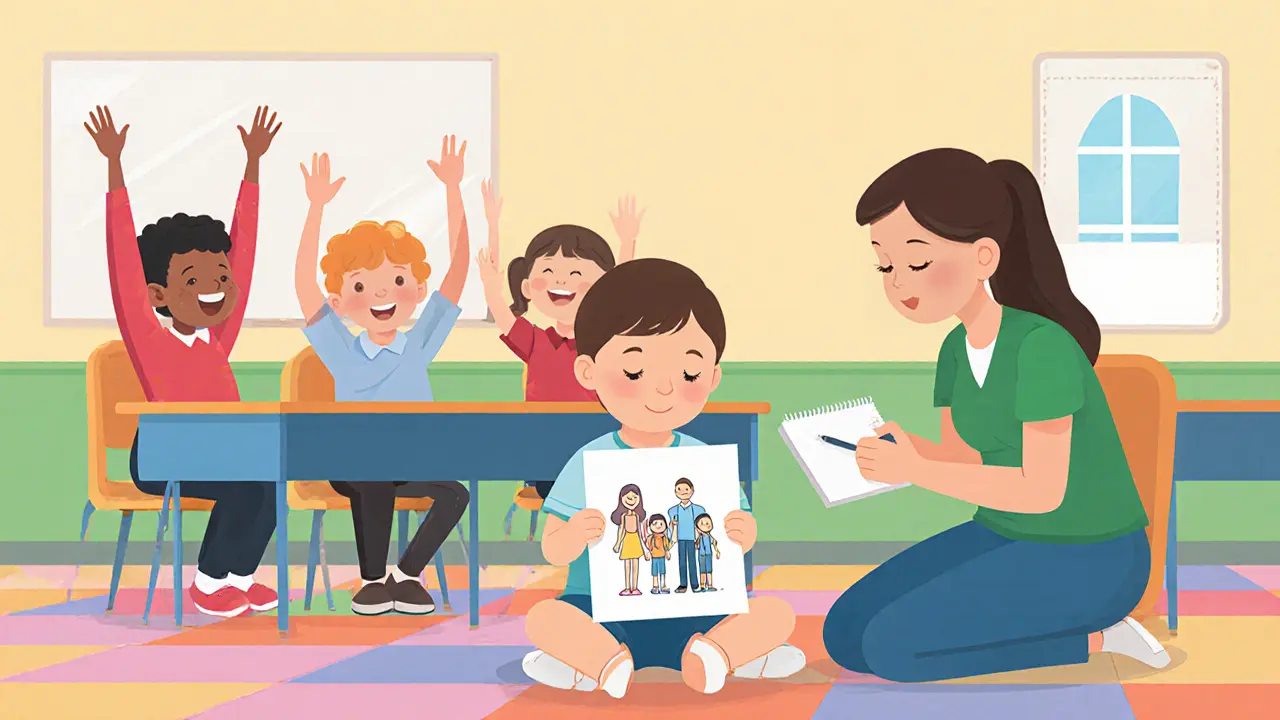Dítě neříká slovo: Co dělat, když dítě mlčí a jak terapie pomáhá
When a child doesn’t speak, it’s not always about delayed speech. It’s often a sign that something deeper is going on — a feeling of being unheard, unsafe, or overwhelmed. This silence isn’t a choice; it’s a response. dítě neříká slovo, stav, kdy dítě výrazně zdržuje nebo úplně vyhýbá mluvené komunikaci, i když má fyzickou a kognitivní schopnost mluvit. Also known as vývojové mlčení, it often appears in children who feel emotionally unsafe, especially after trauma, family conflict, or prolonged stress. This isn’t shyness. It’s not stubbornness. It’s a child’s way of saying, "I don’t feel safe enough to be heard."
When a child stops speaking, the family system reacts — often in ways that make things worse. Parents might push harder, teachers might label them as "difficult," and siblings might feel neglected. The silence spreads like a shadow. But here’s what most people miss: dětská terapie, specifický přístup, který pracuje s dítětem prostřednictvím hry, těla a vztahu, nejen slov doesn’t try to force words out. It rebuilds the feeling of safety first. Methods like Theraplay, metoda, která využívá hratelné interakce mezi rodičem a dítětem k obnově bezpečného připojení or rodinná terapie, přístup, který vidí mlčení dítěte jako signál celé rodinné dynamiky focus on connection, not correction. The child doesn’t need to be fixed. They need to feel seen, held, and understood — without pressure.
Many parents think, "If I just keep asking, they’ll talk." But asking more often means feeling less safe. The breakthrough comes when adults stop demanding speech and start offering presence. A child who has stopped speaking may start whispering, then pointing, then drawing — and only later, speaking. That’s normal. That’s healing. What matters isn’t when they speak, but whether they feel they can.
In Czech practice, we see this often in families where conflict is high, where one parent is emotionally absent, or after divorce, illness, or loss. The child isn’t broken. They’re adapting. And the best therapy doesn’t fix the child — it changes the environment around them. When parents learn to listen without judging, to wait without pushing, and to connect without controlling, the words often return — not because they were forced, but because the silence finally felt safe to break.
Below, you’ll find real, practical articles that show exactly how this works — from behavioral strategies for children with ADHD who shut down, to how trauma affects speech, to how parents become the main healers in dětská terapie. No theory. No fluff. Just what helps — in real families, in real time.
Selektivní mutismus je úzkostná porucha, při níž dítě mluví doma, ale neve škole. Je to nevědomá němota, ne výchovný problém. Terapie pomáhá - pokud začnete včas.
